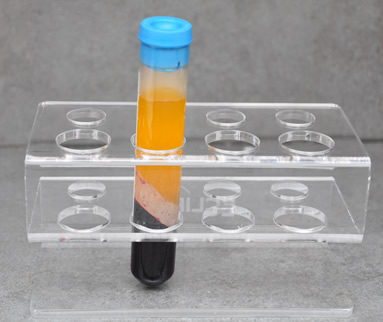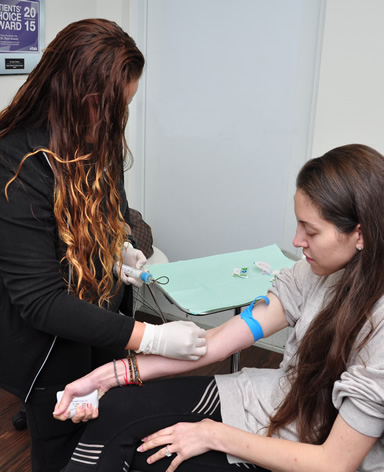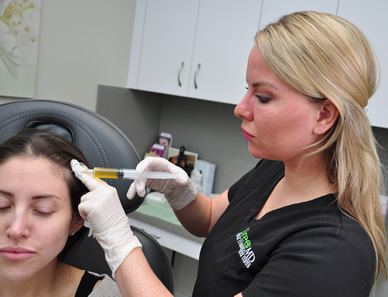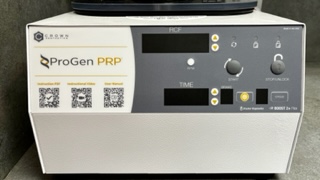A Non-Surgical Solution for Thinning Hair
Platelet Rich Plasma (PRP) therapy has become one of the most advanced and effective non-surgical treatments for hair restoration. Using the healing power of your own blood, PRP is injected into areas of the scalp where hair thinning or shedding is most noticeable. These concentrated platelets contain essential growth factors that stimulate inactive follicles, promoting stronger and healthier hair growth.
Clinical studies have shown PRP can improve both hair density and thickness, making it a trusted option for men and women seeking natural hair restoration results without surgery.
How PRP Hair Therapy Works
The process begins with a small blood draw, similar to a routine lab test. The blood is placed into a centrifuge that spins at high speeds, separating red blood cells from concentrated platelets. Once isolated, the Platelet Rich Plasma is carefully injected into targeted areas of the scalp where hair is thinning.
The procedure typically takes about 10 to 15 minutes for the injections themselves, though you should plan for roughly an hour in the office for the entire visit. Following the treatment, the scalp is gently massaged to enhance absorption and comfort.
Aftercare is simple. Most patients are encouraged to take a warm shower later in the day and avoid strenuous exercise for 24 hours.
What to Expect from Your Treatment Plan
PRP hair restoration is a safe, in-office treatment with no downtime, making it easy to fit into a busy lifestyle. For best results, a series of three to five treatments spaced about one month apart is recommended. After the initial series, maintenance sessions every six to nine months help sustain and enhance your results.
Why Choose GreeneMD for PRP Hair Restoration?
At GreeneMD, we use the ProGen PRP system, an FDA-cleared Class II medical device designed to deliver the most precise and consistent concentration of Platelet Rich Plasma. This advanced technology ensures that patients receive a pure, high-quality PRP sample that optimizes outcomes.
The concentration of platelets is critical. If platelet levels are too low, results may be minimal, while levels that are too high can cause unwanted side effects. The ProGen system maintains the ideal balance by removing red and white blood cells that could otherwise contribute to inflammation or impaired healing. This results in predictable, safe, and effective hair restoration outcomes.
All PRP treatments at GreeneMD are performed under the direction of Ryan Greene, MD, PhD, a double board-certified facial plastic surgeon and non-surgical specialist. Patients can feel confident they are receiving expert care from one of South Florida’s most trusted injectable and aesthetic practices.
Restore Confidence with PRP Hair Therapy
Whether you are noticing early signs of thinning or want to restore fuller, healthier hair, PRP therapy at GreeneMD offers a natural solution backed by science and expertise. With locations serving Weston, Fort Lauderdale, and Miami, our team is here to help you regain confidence in your hair and appearance.
PRP FREQUENTLY ASKED QUESTIONS (FAQ)
Is PRP painful?
There can be some mild discomfort during treatment, but this is minimized with the application of our specially formulated numbing cream prior to treatment.
Is there any downtime with PRP?
There is little to no downtime with PRP scalp injections. We usually recommend to avoid exercise 24 hours after treatment.
Are there any risks with PRP?
PRP is an especially safe treatment option with no risk of allergic reaction because it involves your own blood components. Similar to other injectable treatments, other adverse effects include bruising, swelling, temporary discomfort, or infection. In order to prevent bruising, we recommend avoiding blood thinners, such as aspirin, NSAIDS (such as Advil, Motrin), or fish oil, for at least 7 days prior to treatment unless medication is prescribed by your medical doctor.
How long does a PRP treatment take?
PRP injections usually take 10-15 minutes, however, expect to be in our office for approximately one hour. This includes a consultation, drawing and centrifuging the blood, and numbing the area prior to injection.
How many PRP treatments will I need?
Most patients benefit from a series of PRP injections depending on the condition being treated. Three to four treatments are usually recommended. These are spaced 4 weeks apart. Then, one maintenance treatment every 6-9 months is recommended to maintain results.
Who is not a candidate for PRP injections?
1. Blood disorders such as severe anemia, low platelet count, abnormal platelet functionsnn2. Bloodborne infectious disease (such as HIV/AIDS, Hepatitis C)nn3. A history of scarring and/or poor wound healingnn4. Have undergone skin radiation in the past 12 months
How soon will I see results with PRP?
Many people start to notice some improvement after 2-3 months after the first treatment, though patients often continue to see improvement up to 6 months after treatment.
Does PRP Hair Restoration work for everyone?
As with all collagen-stimulating treatments, there is variability in the results seen among different patients. Some patients may not see any improvement at all if the PRP does not stimulate increased hair grown for them.
What is Platelet-Rich Plasma (PRP) therapy and how does it work?
Platelet-Rich Plasma (PRP) therapy is a medical treatment that utilizes a patient’s own blood to promote healing and tissue regeneration. The process begins with drawing a small amount of blood from the patient, which is then placed in a centrifuge to separate the blood components. This process concentrates the platelets, which are rich in growth factors that play a crucial role in healing. The concentrated PRP is then injected into the area of injury or concern, stimulating the body’s natural healing processes and promoting tissue repair.
What conditions can PRP therapy treat?
PRP therapy is used to treat a variety of conditions, particularly those related to musculoskeletal injuries. Common applications include:rnTendon injuries (e.g., Achilles tendonitis, tennis elbow)rnLigament sprainsrnOsteoarthritis of the knee, hip, or shoulderrnRotator cuff injuriesrnChronic pain conditionsrnHair loss and male pattern baldnessrnThe therapy aims to enhance recovery and reduce pain in these conditions by leveraging the body’s natural healing mechanisms.
What can I expect during a PRP treatment session?
During a PRP treatment session, the healthcare provider will first draw blood from your arm, typically about one to three vials. The blood is then processed in a centrifuge to separate and concentrate the platelets. Once prepared, the PRP is injected into the targeted area using a fine needle. The entire procedure usually takes about 30 to 60 minutes, and patients can often resume normal activities shortly after treatment. Some mild discomfort or swelling at the injection site may occur but typically resolves quickly.
Are there any risks or side effects associated with PRP therapy?
PRP therapy is generally considered safe since it uses the patient’s own blood, minimizing the risk of allergic reactions or infections. However, as with any injection procedure, there are potential risks, including:rnMild pain or discomfort at the injection siternTemporary swelling or bruisingrnRisk of infection (though rare)rnPatients are advised to discuss any concerns with their healthcare provider prior to treatment to ensure they understand the benefits and potential risks.
How long does it take to see results from PRP therapy?
The timeline for seeing results from PRP therapy can vary depending on the condition being treated and individual patient factors. Many patients begin to notice improvements within a few weeks after treatment; however, optimal results may take several months to manifest as tissue healing progresses. For chronic conditions like osteoarthritis or tendon injuries, multiple sessions may be recommended for enhanced results. Follow-up appointments are typically scheduled to assess progress and determine if additional treatments are necessary.
What is Platelet-Rich Plasma (PRP) therapy and how does it work?
Platelet-Rich Plasma (PRP) therapy is a medical treatment that utilizes a patient’s own blood to promote healing and tissue regeneration. The process begins with drawing a small amount of blood from the patient, which is then placed in a centrifuge to separate the blood components. This process concentrates the platelets, which are rich in growth factors that play a crucial role in healing. The concentrated PRP is then injected into the area of injury or concern, stimulating the body’s natural healing processes and promoting tissue repair.
What conditions can PRP therapy treat?
PRP therapy is used to treat a variety of conditions, particularly those related to musculoskeletal injuries. Common applications include:rnTendon injuries (e.g., Achilles tendonitis, tennis elbow)rnLigament sprainsrnOsteoarthritis of the knee, hip, or shoulderrnRotator cuff injuriesrnChronic pain conditionsrnHair loss and male pattern baldnessrnThe therapy aims to enhance recovery and reduce pain in these conditions by leveraging the body’s natural healing mechanisms.
What can I expect during a PRP treatment session?
During a PRP treatment session, the healthcare provider will first draw blood from your arm, typically about one to three vials. The blood is then processed in a centrifuge to separate and concentrate the platelets. Once prepared, the PRP is injected into the targeted area using a fine needle. The entire procedure usually takes about 30 to 60 minutes, and patients can often resume normal activities shortly after treatment. Some mild discomfort or swelling at the injection site may occur but typically resolves quickly.
Are there any risks or side effects associated with PRP therapy?
PRP therapy is generally considered safe since it uses the patient’s own blood, minimizing the risk of allergic reactions or infections. However, as with any injection procedure, there are potential risks, including:rnMild pain or discomfort at the injection siternTemporary swelling or bruisingrnRisk of infection (though rare)rnPatients are advised to discuss any concerns with their healthcare provider prior to treatment to ensure they understand the benefits and potential risks.
How long does it take to see results from PRP therapy?
The timeline for seeing results from PRP therapy can vary depending on the condition being treated and individual patient factors. Many patients begin to notice improvements within a few weeks after treatment; however, optimal results may take several months to manifest as tissue healing progresses. For chronic conditions like osteoarthritis or tendon injuries, multiple sessions may be recommended for enhanced results. Follow-up appointments are typically scheduled to assess progress and determine if additional treatments are necessary.







